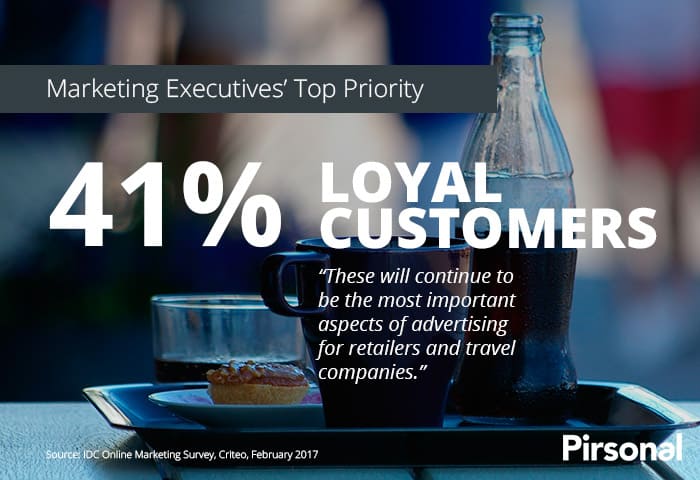The customer journey, a critical aspect of marketing, encompasses the stages a consumer passes through before purchasing.
From initial awareness to post-purchase satisfaction, every step presents opportunities for businesses to engage and delight their audience.
Let’s delve deeper into this intricate process to uncover its significance and strategies for optimization.
Stage 1: Awareness – Capturing Attention
At the outset, potential customers become aware of a need or desire for a particular product or service.
This phase emphasizes the importance of visibility and brand recognition.
There are many ways your marketing team can achieve this.
To help potential buyers find and remember your brand, it is beneficial to use SEO-optimized content, social media marketing, and incorporate video marketing early on.
Why video this “early”?
Many marketing teams often overlook the importance of emotionally connecting with their audience, right from the start. Video is the most effective type of content to achieve this.
Therefore, strategic content can boost business visibility and attract your intended audience.
By addressing pain points and offering solutions, brands can position themselves as valuable resources, initiating the customer journey.
If you want to learn how to strategically use video to engage with your audience at every stage of the journey, make sure to watch the following tutorial:
Stage 2: Consideration – Providing Value
Once aware of their needs, consumers embark on the consideration stage, where they research and evaluate available options.
During this phase, your business must focus on providing valuable content and information that educates and guides potential customers.
For instance, blog posts, product demonstrations, and customer testimonials serve as effective tools for building trust and credibility.
Highlight the unique selling points and address common concerns. This way, your brand can influence purchasing decisions.
Stage 3: Decision – Facilitating Conversion
In the decision stage, consumers are ready to make a purchase but may need some extra encouragement to finalize their decision.
Here, your organization can leverage persuasive techniques such as limited-time offers, discounts, and personalized recommendations to incentivize conversion.
You can start using personalization now because you can incorporate lead generation mechanisms depending on your target audience. It could even be done earlier, in my opinion.
Many organizations use automatically made, personalized videos at this stage. It helps them stand out from competitors and increase conversions.
With Pirsonal’s personalized video software, marketing teams and their agencies can automatically create real personalized videos and easily incorporate them within marketing automation workflows and campaigns.
Clear calls-to-action and streamlined purchase processes are essential for reducing friction and encouraging action.
However, depending on your audience, industry, price point, and product or service, friction could also be beneficial.
Maximize the potential of your customer journey by optimizing landing pages with personalization, and streamlining checkout flows.
This strategy will not only capitalize on the existing momentum but also significantly enhance your conversion rates.
Stage 4: Post-Purchase – Ensuring Satisfaction

After the purchase, businesses can build lasting relationships with customers through post-purchase interactions.
This stage is also one of the most common ones for personalized video marketing strategies.
For example, you can use personalized videos and various engaging interactions to provide exceptional post-purchase support, gather feedback, and offer rewards or loyalty programs.
These strategies can improve customer satisfaction and foster repeat business.
By prioritizing customer experience and customer engagement, businesses can turn one-time buyers into loyal brand advocates, thereby completing the cycle of the customer journey.
To learn more about why customer engagement is important in your digital marketing, make sure to watch the following video now:
Optimizing the Customer Journey for Success
To optimize the customer journey and drive meaningful results, businesses must adopt a holistic approach that aligns with the needs and preferences of their target audience.
In our experience, one of the most effective ways to do this is through personalization throughout the customer journey.
Watch the following video to learn a strategy I recommend to successfully leverage personalization throughout the customer journey to increase engagement, boost sales, and increase loyalty.
By leveraging data analytics, artificial intelligence (AI), customer relationship management (CRM) data, customer feedback, and industry insights, businesses can gain valuable insights into consumer behavior and preferences, enabling them to tailor their strategies accordingly.
Don’t forget to continuously test and iterate to improve the customer journey and adapt to market changes.
18 Reasons Why Understanding the Customer Journey is Imperative
Understanding your customer’s journey is essential, not just a passing trend. The market is crowded, and your audience is constantly exposed to numerous interactions and distractions every day.
Businesses that invest in comprehending their customer’s journey gain a competitive edge by tailoring their strategies to meet their customers’ needs and expectations effectively.
Let’s delve deep into 18 strong reasons why knowing your customer’s journey is key to enhancing engagement with a more relevant marketing strategy.
1. Anticipate Needs and Preferences
By mapping out your customer’s journey, you gain invaluable insights into their needs, preferences, and pain points at every stage of their interaction with your brand.
This understanding empowers you to anticipate their needs proactively, thereby delivering personalized experiences that resonate with them on a deeper level.
2. Enhance Customer Satisfaction
A thorough understanding of your customer’s journey enables you to identify areas for improvement in your products or services.
By addressing pain points and streamlining the user experience, you can significantly enhance customer satisfaction and loyalty.
3. Tailor Marketing Strategies
With insights into your customer’s journey, you can tailor your marketing strategies to target them effectively at each stage of their buying journey.
Whether it’s raising awareness, nurturing leads, or driving conversions, personalized marketing messages aligned with the customer’s journey are more likely to resonate and drive desired actions.
4. Optimize Customer Touchpoints
Mapping out the customer’s journey helps you identify all the touchpoints where customers interact with your brand.
By optimizing these touchpoints, whether it’s your website, interactive videos, social media channels, or customer support, you can ensure a seamless and consistent experience across all channels, fostering trust and credibility.
5. Improve Product Development
Insights into the customer’s journey provide invaluable feedback for product development.
By understanding how customers use your products or services and identifying pain points or unmet needs, you can innovate and improve your offerings to better align with customer expectations.
This is one of my favorite ones, as I’m a product guy with a heart for marketing.
6. Foster Brand Advocacy
Satisfied customers who have positive experiences throughout their journey are more likely to become brand advocates.
By delivering exceptional experiences at every touchpoint, you can turn customers into loyal advocates who promote your brand through word-of-mouth recommendations and positive reviews.
7. Increase Conversion Rates
A deep understanding of the customer’s journey allows you to identify barriers or friction points that may hinder conversions.
By optimizing the user experience and addressing these obstacles, you can increase conversion rates and drive more sales and revenue for your business.
8. Enhance Customer Retention
Retention is just as important as acquisition, if not more so.
By understanding the customer’s journey, you can identify opportunities to delight and engage customers beyond the initial purchase, fostering long-term relationships and improving customer lifetime value (LTV).
9. Personalize Customer Interactions
Personalization is key to building meaningful connections with your customers.
By leveraging data from the customer’s journey, you can personalize interactions and communications based on their preferences, behavior, and past interactions, creating more relevant and engaging experiences.
For example, the best personalized videos are based on the context of each individual. This makes them more relevant and actionable.
10. Drive Innovation
A deep understanding of the customer’s journey enables you to identify emerging trends, preferences, and market opportunities.
By staying attuned to evolving customer needs, you can drive innovation within your organization and stay ahead of the competition.
11. Optimize Marketing ROI
By aligning your marketing efforts with the customer’s journey, you can optimize your return on investment (ROI).
By targeting the right audience with the right message at the right time, you can maximize the effectiveness of your marketing campaigns and drive better results.
12. Foster Customer-Centric Culture
A customer-centric culture is essential for business success in today’s customer-driven market.
By emphasizing the importance of understanding and meeting customer needs throughout the organization, you can foster a culture that prioritizes customer satisfaction and loyalty.
13. Gain Competitive Advantage
Businesses that truly understand their customer’s journey have a significant competitive advantage and are more profitable.
By consistently delivering exceptional experiences that exceed customer expectations, you can differentiate your brand and position yourself as a market leader.
14. Adapt to Changing Customer Behavior
Customer behavior is constantly evolving, driven by technological advancements, cultural shifts, and changing market dynamics.
By continuously monitoring and analyzing the customer’s journey, you can adapt your strategies and offerings to stay relevant and meet evolving customer expectations.
15. Build Trust and Credibility
Trust is the foundation of any successful customer relationship.
By delivering consistent, positive experiences throughout the customer’s journey, you can build trust and credibility with your audience, establishing your brand as a reliable and reputable choice in the marketplace.
16. Foster Cross-Channel Synergy
Today’s customers are omnichannel. Therefore, they expect a seamless experience across all channels and touchpoints.
By understanding the customer’s journey holistically, you can foster synergy between different channels and create integrated experiences that drive engagement and conversion.
17. Reduce Customer Churn
Customer churn can have a significant impact on your bottom line.
By identifying the reasons why customers churn and addressing them proactively, you can reduce churn rates and improve customer retention, leading to long-term sustainable growth.
18. Drive Sustainable Growth
Ultimately, a deep understanding of the customer’s journey is essential for driving sustainable growth and marketing success.
Your marketing will be more relevant.
By putting the customer at the center of everything you do and continuously striving to meet their needs and expectations, you can build a loyal customer base and achieve long-term marketing success.
Final Thoughts
The customer journey is a dynamic and multifaceted process that plays a key role in shaping consumer behavior and driving marketing success.
By understanding the various stages of the customer journey and implementing targeted strategies, your marketing team can effectively engage and convert prospects, ultimately fostering long-term relationships and loyalty.
Use customer-centricity, personalization, and continuous improvements to constantly engage with your audience, from employees to customers.
Also, leverage video content with personalization to emotionally connect with your audience throughout the different stages of their journey with your brand.
As you can see, knowing your customer’s journey is not just beneficial; it’s essential for thriving in today’s marketing environment.

